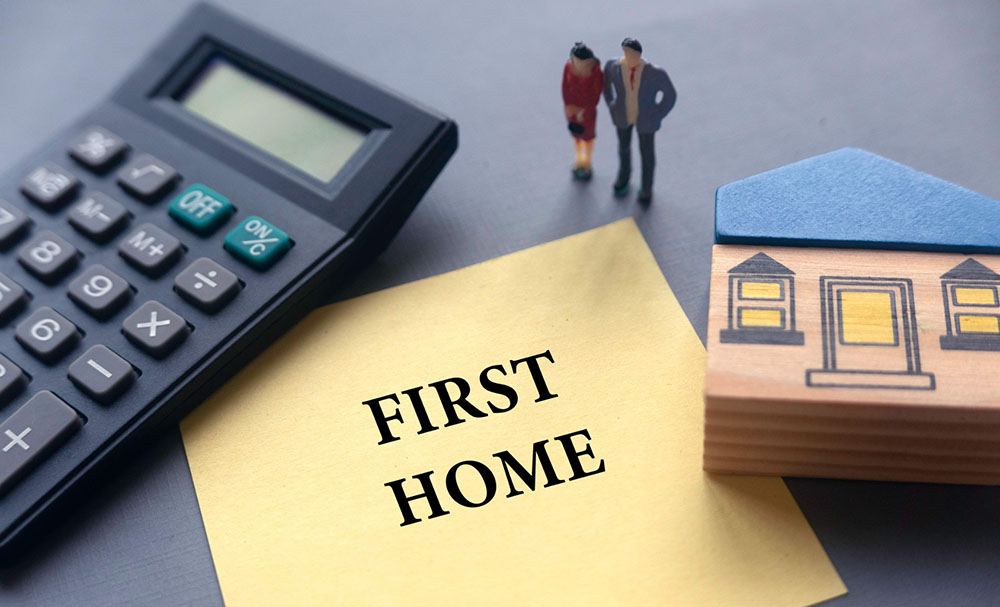Imagine transforming your home into your dream living space without breaking the bank. Refinancing for renovations makes this possible by helping you tap into your home’s equity to finance your renovation project and potentially adding more value to your property.
In this comprehensive guide, we’ll walk you through the ins and outs of refinancing for renovations and provide you with the knowledge you need to make an informed decision.
Short Summary
- Refinancing your home loan for renovations is a process that allows homeowners to access funds for home renovations while potentially securing more favourable home loan terms.
- Consider current mortgage terms, interest rates, loan fees, and closing costs when considering refinancing for a renovation.
- Shopping around for the best home loans and working with experienced professionals, such as a mortgage broker near you with great reviews, can help you achieve the best outcome in refinancing your home loan for home renovation projects.
Understanding Refinancing or Cash Out Refinance
Refinancing or cashing out equity from your home loan to fund renovations, generally involves replacing your existing home loan with a new one to access funds for home minor or major renovations while potentially securing better loan terms on the new home equity loan.
This approach can offer several benefits, including the convenience of managing one loan and loan repayments, as well as the potential to secure more favourable loan terms.
But how does it work, and what are its advantages?
How it works
In a home equity loan refinance, you obtain additional financing by refinancing with a lender and increasing the loan amount, using the equity in your property to fund the renovation.
Some home loans offer features such as offset accounts and redraw facilities, which enable homeowners to make additional payments to their home loan or a linked account, thereby reducing the interest payable on the loan.
However, it’s crucial to evaluate the long-term implications of accessing funds through these facilities on your home loan repayments. So, what are the advantages of a refinance for the purposes of renovating?
Advantages of a home renovation loan
Refinancing for home renovations can provide homeowners with extra funds for their renovation projects, as well as the potential to lower interest rates, reduce monthly payments, and offer more flexibility in the renovation loan terms.
By refinancing, you may be able to secure a lower interest rate and longer repayment terms, making the renovation project more affordable in the long run.
But first, it’s crucial to determine how much equity you have in your home.
Determining Your Home Equity

Your equity plays a significant role in financing your renovation project. Equity is the difference between your home’s current market value and the outstanding mortgage balance.
To utilise your equity for a renovation project, you need to calculate your equity and understand how it can be used for refinancing.
Refinancing is a great way to access equity in your home. It allows you to use it towards many different wealth building strategies such as investing in property/shares or adding value to an existing property. You can also use equity to consolidate debt.
Calculating equity
To calculate your equity, subtract the amount you owe on your mortgage from the current market value of your home. This will give you an idea of how much equity you have available to tap into for your home renovation.
Now let’s explore how you can use your equity for refinancing.
Using equity for refinancing
Homeowners can leverage their equity by refinancing their mortgage to acquire funds for renovations. The first step in utilising equity for refinancing is to obtain a valuation of the property, as many lenders require a valuation to assess the level of risk you present and to protect themselves.
Typically, you need to have at least 20% total equity in your home to refinance the loan.
Before deciding to borrow money against equity, evaluate your capacity to pay any additional debt and do not assume you can access the total amount of your equity. Every lender has different policies around how much equity you can access and the rates of interest you would need to pay.
We recommend you speak to one of OurTop10 Brokers to work out the best way to borrow money for your renovation.
Types of Refinancing Loans
There are several types of refinancing loans available, such as cash-out refinance and equity loans. Choosing the right renovation loan type is essential for a successful application and ensuring that you secure the most advantageous terms for your renovation.
Let’s dive deeper into these loan types.
Cash-out refinance
A cash-out refinance is a type of mortgage refinancing in which you obtain a new loan for an amount greater than the balance of your existing loan, and receive the difference in cash.
This option enables homeowners to take out a loan that exceeds their current mortgage balance and receive the difference in cash for home improvement purposes.
Cash-out refinances can offer homeowners access to additional funds for renovations, as well as potentially lower interest rates than other loan options.
However, consider your current mortgage terms, interest rates, loan fees, and closing costs, as well as the potential need for lender’s mortgage insurance (LMI) before opting for a cash-out refinance.
Cash out equity loan
Equity cash out loans are another option for refinancing your mortgage. These loans use the equity in your property as collateral, providing a lump sum for renovations.
By leveraging your equity, you may be able to access up to 90% of your home’s value and secure better rates than those offered for credit cards and personal loans.
However, it is possible to run out of funds if the cost of the renovation exceeds the equity of your home. Conduct a cost analysis and stick to the allocated budget to ensure a smooth process.
Factors to Consider Before Refinancing

Before deciding to refinance for a renovation project, it’s crucial to consider several factors, such as your current mortgage terms, interest rates, loan fees, and closing costs, as well as the potential need for LMI if borrowing more than 80% of your property’s value.
Let’s explore these factors in more detail.
Current mortgage terms
It’s vital to assess your current mortgage terms to ensure that refinancing will provide better conditions. Consider fixed-rate loans for an agreed period of time, typically ranging from 1-5 years, with rates anticipated to decline by the beginning to mid 2024 in Australia.
Also, explore other loan options, such as variable or split loans and interest-only loans which are advised during the renovation period as this keeps the costs down.
Interest rates
Compare interest rates to ensure refinancing will result in lower overall costs. Consider the annual percentage rate (APR) and the loan’s terms and conditions when evaluating interest rates.
It’s important to pay interest to these factors to make an informed decision.By comparing the APR of different loans, you can ensure that you receive the most advantageous offer.
Loan fees and closing costs
Evaluate loan fees and closing costs associated with refinancing to determine if it’s financially beneficial. These costs may include loan origination fees, lender fees, property valuation fees, and legal fees.
Generally, closing costs are estimated to be 3% – 6% of the loan amount.
Lender’s Mortgage Insurance (LMI)
Consider the potential need for LMI if borrowing more than 80% of your property’s value. LMI is a one-off, non-refundable, non-transferable premium that is incorporated into the home loan and calculated based on the size of the deposit and the amount borrowed.
LMI provides protection for the lender against the risk of not recovering the outstanding loan balance if the borrower is unable to make their loan payments and the property is sold for an amount less than the outstanding loan balance.
There are some lenders that will allow you to borrow money up to 85% LVR with no LMI, best to speak to a a top 10 mortgage broker near you.
Tips for a Successful Refinance

To ensure a successful refinance experience, it’s crucial to budget and plan accordingly, compare loan terms from various lenders, and enlist the help of experienced professionals.
Let’s discuss these tips in more detail.
Budgeting and planning
Developing a detailed budget and plan for your renovation project is essential to avoid overspending. Establish goals, estimate costs, allocate resources, track progress, and adjust the plan as necessary.
Start early, plan ahead, set realistic goals, track progress, be flexible, and seek professional advice.
Shopping around for the best loan terms
Shop around and compare loan terms from multiple lenders to secure the best deal. Research different lenders, compare interest rates, comprehend the loan terms and conditions, and negotiate with lenders.
Also, take into account any additional fees or charges that may be associated with the loan.
Working with experienced professionals
Work with experienced professionals, such as mortgage brokers or a home lending specialist and builders/contractors, to ensure a smooth renovation process. Collaborating with experienced professionals offers the advantage of tapping into their expertise and skills to ensure a successful outcome.
They can also give valuable guidance on the most suitable materials and techniques to use for the project, as well as assist in anticipating potential issues before they occur.
Alternatives to Renovation loans

If a renovation loan isn’t the right fit for your situation, consider alternative financing options for your home renovation project, such as personal loans, construction loans, and home improvement loan grants and incentives, or explore a home renovation loan.
Let’s explore these alternatives further.
Personal loans
Personal loans can be a suitable option for smaller home renovations when there is insufficient equity in your home or a redraw facility is unavailable. However, personal loan interest rates tend to be higher than those of standard home equity loans, and the advertised rate is often the starting rate, not the ultimate rate.
It is important to consider the total cost of the loan, including any fees and charges.
Construction loans
Construction loans provide funds in stages throughout the renovation process, helping manage cash flow and potentially reducing interest costs. These loans are utilised to finance building or renovating a property and differ from traditional home loans due to building works necessitating ongoing payments as the construction progresses.
A construction loan is a specific type of financing option that caters to these unique requirements, often used in conjunction with a fixed price building contract to ensure a predictable budget.
The loan is typically secured against the property and is repaid once the works are completed and the property is sold.
Grants and incentives
Explore available grants and incentives for home renovations, such as energy efficiency upgrades or government-sponsored programs.
Some councils in NSW also offer rebates for the installation of rainwater tanks. Investigate the grants and incentives in your region to ascertain which ones you may qualify for.
Summary
In conclusion, refinancing offers homeowners a way to tap into their home’s equity to finance their renovation projects while potentially securing better loan terms. By understanding the concept, determining your home equity, comparing loan types, and considering important factors, you can make an informed decision about refinancing for your renovation project.
To ensure a successful experience, follow the tips shared in this guide and explore alternative financing options if a refinance isn’t the right fit for your situation. Your dream home renovation awaits you!
Frequently Asked Questions
Can I remortgage my house for renovations?
You can remortgage your house to tap into your home equity and use the funds for renovations. This involves refinancing your existing home loan or moving it from another lender, and potentially changing its rate.
Remortgaging can be a great way to access funds for renovations, but it’s important to consider the costs and risks associated with it. Make sure you understand the terms of the agreement.
What is the best way to pay for home renovations?
For home renovations, the best option is to consider tapping into your savings, unlocking equity in your home, taking out a personal loan or construction loan, refinancing your home loan, redrawing extra repayments, or using a credit card.
What is a refinance for renovation loan?
Refinancing for the purposes of renovating involves replacing your existing home loan with a new one to access funds for home renovations and potentially secure better loan terms.
How do I calculate my home equity?
To calculate your home equity, subtract the amount you owe on your mortgage from the current market value of your home.
What are the main types of refinancing loans for renovating purposes?
The two main types of refinancing loans are cash-out refinance and home equity loans, both providing funds for homeowners to update their homes.
These loans can be used to make improvements to the home, such as replacing old appliances, updating the kitchen or bathroom, or even adding a new room. They can also be used to pay off existing debt or to make repairs to existing debt.
FAQs
A refinance loan involves replacing your existing mortgage with a new one, typically to secure better interest rates, change loan terms, or access equity.
A renovation loan is a type of financing specifically designed to fund home improvements, repairs, or upgrades, often rolled into your existing mortgage.
Refinancing can lower your interest rate, reduce monthly payments, change the loan term, or allow you to tap into your home’s equity for other financial needs, such as renovations.
Refinancing can provide the funds needed for renovations by accessing the equity in your home. This can be a cost-effective way to finance home improvements without taking out a separate loan.
Renovation loans can provide lump-sum funds for home upgrades, often at lower interest rates than personal loans or credit cards. They can increase your property value and improve your living space.
Yes, there are several types, including home equity loans, home equity lines of credit (HELOC), and construction loans, each with unique features and benefits.
Qualification typically depends on your credit score, income, existing debt, and the amount of equity in your home. Lenders will evaluate your financial situation to determine eligibility.
The process involves assessing your financial situation, choosing the right loan type, submitting an application, and providing necessary documentation. The lender will review and approve the loan, which will then be processed.
Yes, there are usually fees such as application fees, appraisal fees, closing costs, and sometimes early repayment penalties on your existing loan. It’s important to understand all associated costs.
Generally, yes. Renovation loans can be used for a wide range of home improvements, including kitchen remodels, bathroom upgrades, structural repairs, and adding new rooms or features to your home.
Your choice depends on your financial goals, the amount of equity in your home, and the scope of your renovation project. Consulting with a mortgage broker can help you make an informed decision.
Consider your current financial situation, credit score, home equity, and future plans. Evaluate the potential return on investment for renovations and ensure you understand the terms and conditions of the new loan.


